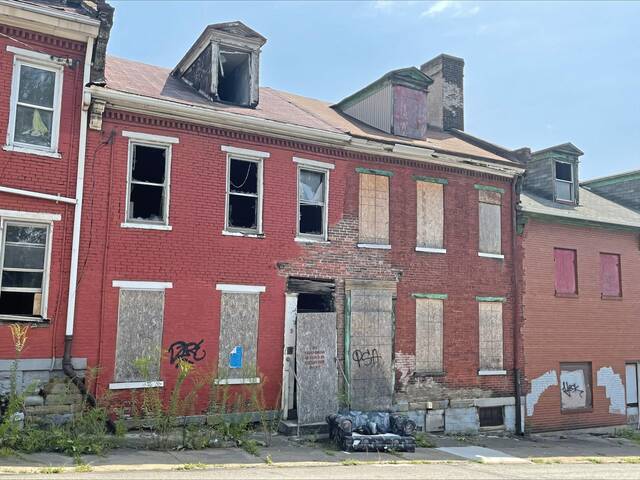Colin McNickle: Revitalizing the Pittsburgh Land Bank
Allegheny County, the City of Pittsburgh and Pittsburgh Public Schools signed an intergovernmental cooperation agreement (ICA) on Nov. 19 designed to breathe new life into the long moribund Pittsburgh Land Bank (PLB).
And while the agreement grants the land bank broad new powers, including access to sheriff’s sales, a researcher at the Allegheny Institute for Public Policy says there’s still much work to be done to effectively address the city’s “unproductive property” problems.
“The PLB has potential to more efficiently process existing blighted, vacant and abandoned properties,” says Alex Sodini . “But it must be used in a manner which truly benefits the city and ensures taxpayers are getting the most bang for their buck.”
It was Act 153 of 2012 that allowed municipalities with a population greater than 10,000 to create a land bank to more efficiently combat blighted, vacant and abandoned properties. Pittsburgh City Council authorized its land bank in 2014.
“However, the PLB remained unproductive for nearly a decade,” Sodini recounts, “failing to make its first sale until 2023.”
While steady progress has been made since, more must be done, he stresses.
Sodini notes that blighted, vacant and abandoned properties can be difficult to maintain or sell due to a combination of deterioration, tax delinquency and other financial and legal impediments.
The PLB prepares them for disposition by filing a “quiet title” action in court. That clears a property’s title of liens from owed back taxes or utilities and other competing claims of ownership such as mortgages.
But “a lack of funding, internal policies and procedures and personnel contributed to the delay,” the think tank researcher says, reminding that a $3.5 million allocation from the city’s American Rescue Plan (ARP) funds got the ball rolling.
“But the ARP allocation only provides funding through 2026,” Sodini reminds.
The new ICA allows the land bank to retain 50% of the new real estate taxes that would be owed to the taxing bodies for five years on property it sells. City Council created a task force to examine potential long-term funding solutions this past June; a report is expected soon.
“To that end, economizing existing resources in the city’s budget would be more prudent than increasing taxes or fees as a long-term funding source for PLB operations,” he says.
Sodini reminds that the PLB now mostly acquires properties which have an interested party or buyer identified. This is, in part, due to its own funding constraints but also to ensure proper stewardship, sufficient scope for community engagement and adequate financing.
“As such, a comprehensive examination of land-use policy could help further maximize the PLB’s potential to return properties to productive use,” he says.
Additionally, Sodini says emphasis must be placed on lowering barriers to construction and development for both residential property and commercial businesses.
Streamlining permitting processes, addressing restrictive elements of the zoning code and eliminating, or at the very least relaxing, other onerous land-use mandates — such as minimum parking requirements — should be high priorities, he stresses.
“Simply put, the more hurdles, stipulations and requirements, such as affordable housing mandates, placed upon potential buyers and developers by the city and/or the PLB, the more difficult it will be to find, encourage and attract development and investment,” Sodini concludes.
Colin McNickle is communications and marketing director at the Allegheny Institute for Public Policy and can be reached via email.
Remove the ads from your TribLIVE reading experience but still support the journalists who create the content with TribLIVE Ad-Free.

